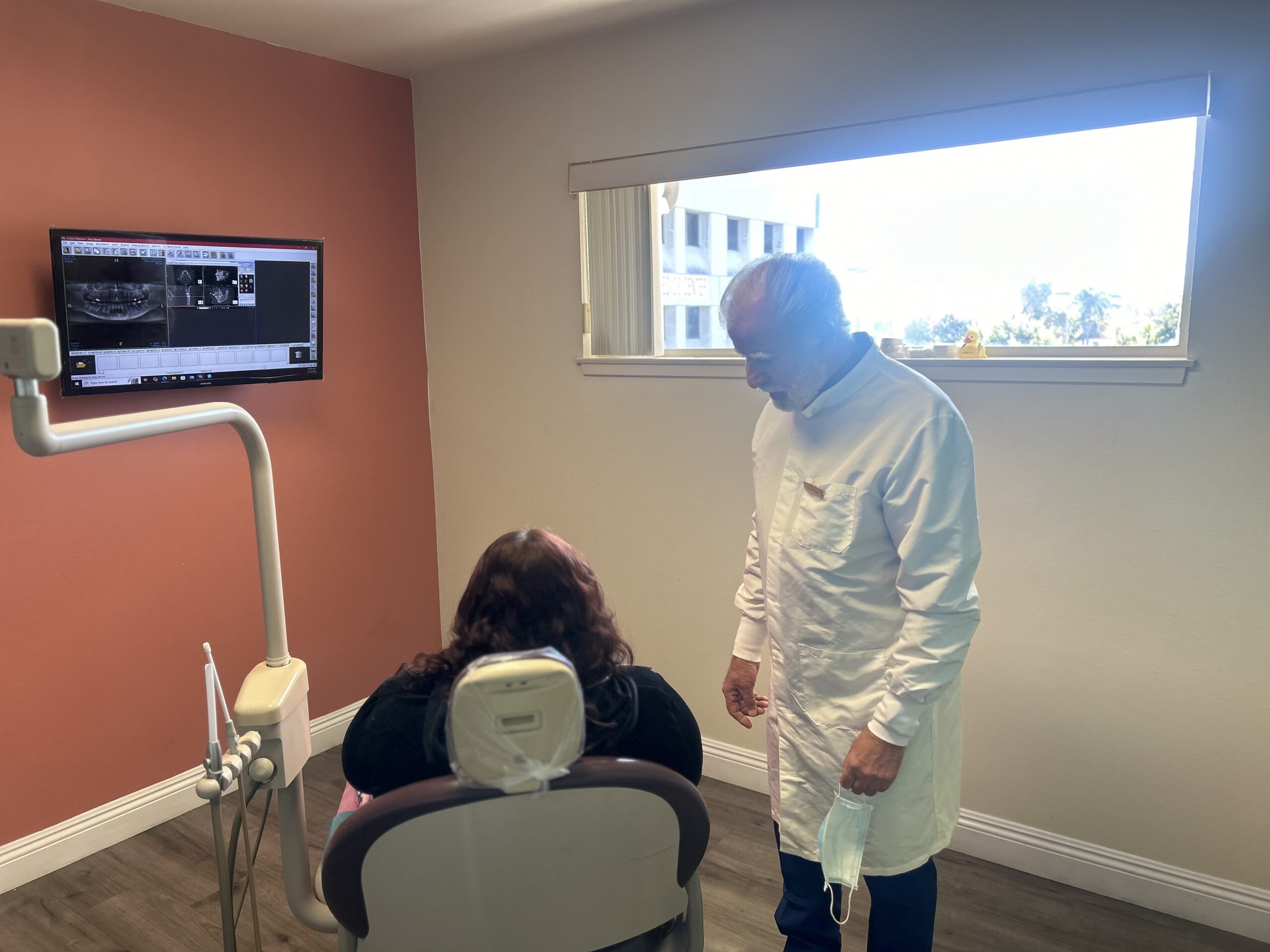Much of the anxiety of getting dental crowns comes from the anticipation of discomfort during the procedure rather than the actual results. We understand the feeling. But we’d like to assure you that all of these myths about how painful a dental crown procedure is come from unfounded claims. That’s why we want to get the facts straight up!
Getting a crown in Upland California is not only virtually painless, but it’s also a safe procedure.
If you’ve been advised to get dental crowns but still having second thoughts, you came to the right place! Join us as we guide you throughout the process. Believe us—every step you take gets you closer to a stronger, healthier smile.

Dental Crown Procedure Explained
A dental crown is basically a cap placed over your tooth. It covers your whole tooth, kind of like a hat. (a tooth-shaped cap) Dentists use them to restore teeth that are either weak, broken, or decayed.
Before placing a crown, your dentist will need to shave off a tiny bit of enamel to make sure it fits just right. Yes, you read it right. Your dentist needs to remove a small piece of your tooth to snug that tooth crown.
While the idea might send pain signals to your brain, the process is conceivably seamless and pain-free. If the dentist is only removing a bit of the surface enamel of your tooth and not touching the pulp or the root of the tooth, the sensation is almost unnoticeable. In fact, there’ll no longer be a need for an anesthetic to have a small bit of enamel removed.
The use of anesthesia, however, may still vary based on an individual’s pain tolerance and the complexity of the dental work.

When Is Anesthesia Necessary During a Dental Crown?
The use of stainless steel crowns involves a slight reduction of the tooth to create space for the crown, which should be positioned 0.5 — 1 mm below the gumline to prevent leakage and ensure a proper fit. This method is what experts call “subgingival preparation.
Since subgingival preparation can cause discomfort, SSC placement is typically done with infiltration anesthesia or a method used to induce a loss of sensation in a specific, localized area of the body.
Additionally, conscious sedation may be used to help patients who feel anxious or are undergoing lengthy procedures. In complicated, yet rare cases—such as for children, patients with special needs, or those with severe dental anxiety—general anesthesia may be administered to keep the patient fully unconscious and unaware throughout the procedure.
Breaking Down the Procedure – What to Expect
Should you fear a dental crown procedure? The answer is “knowledge is the antidote to fear.” We’re here to break down to you the entire dental crown process to help you ease your worries. Let’s break it down step by step:
Step 1: Consultation and Assessment
Everything starts with a visit to your dentist! During your initial consultation, your dentist will carefully examine your tooth and discuss your options. This is a great opportunity for you to ask questions, express your concerns, and fully understand why a dental crown is the best option.
Just think of this: the first phase is all about planning and setting expectations so you get to process everything before you undergo the actual procedure.
Step 2: Preparation
Now, let’s dive into the actual procedure and discuss how you’re prepared for your dental crown.
Before placing the crown, your dentist will prepare your tooth.
- First, the area is numbed completely, so you won’t feel a thing. But most of the time anesthesia won’t be needed.
- Then, the dentist will carefully reshape the tooth to make space for the crown. Some patients may feel mild pressure or vibrations from the dental tools, but it shouldn’t be uncomfortable. Also, people have different reactions to anesthesia, thus, the sensitivity and discomfort level might vary from one patient to another.
- If at any point you feel uncomfortable, your dentist can adjust the anesthetic to make sure you remain calm and comfy.
Step 3: Taking Impressions or Scans
Next, your dentist will take a detailed mold or scan of your tooth, in which traditional impressions involve a quick bite into a putty-like material. Modern dental technology often uses digital 3D scans, which are faster and more precise, ensuring your crown fits perfectly to your tooth.
Step 4: Temporary Crown
While your permanent crown is prepared, you’ll wear a temporary one. While temporary crowns are as functional as permanent ones, they are not as durable. So a word of caution: it’s best to avoid sticky or hard foods to safeguard your temporary crown.
The entire process of examination, scanning, and placing a temporary crown takes about 60 to 90 minutes, all completed during the first visit.
Step 5: Permanent Crown Placement
Now, let’s go to the most rewarding part of the process: the placement of the permanent crown. When your permanent crown arrives, your dentist will securely bond it to your tooth. The final process is quick, and you’ll walk out with a restored tooth that looks and functions just like a natural one.
There you have it! A newly set of functional teeth is now ready to munch on your favorite treats. You might not realize that the entire procedure only took two visits with your dentist. But what if we tell you that it could even take one day to finish? And that’s through same-day dental crowns.
A same-day crown is designed, created, and placed in a single visit using advanced technology like CEREC (Chairside Economical Restoration of Esthetic Ceramics) or other similar systems.
The process involves digital scanning to create a 3D model, designing the crown with specialized software, and milling it on-site. The final crown is then bonded to your tooth, all during one appointment. While this option offers convenience, time-saving, and precision, it may not be suitable for every case.
Entrust Your Oral Health with The Best Upland Dentist
What better way to take care of your oral health than by finding the best dentist who will give your dental care the utmost dedication? If you’re looking to get quality dental services in Upland or Ontario California, don’t hesitate to book a consultation with Upland Dental Practice.
Whether it’s a tooth that requires dental crowns, dental crown replacement, or any other restoration (e.g., veneers), we’re here to guide you every step of the way. Got a dental emergency or other tooth-related issues? Call us at 909 920 6000.


